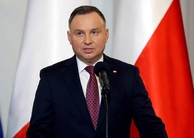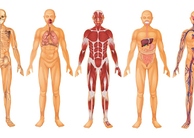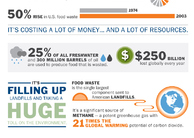Opinion:From Physician to Patient: the Effects of the Patient Protection and Affordable Care Act (PPACA)
By
2013, Vol. 5 No. 06 | pg. 1/1
KEYWORDS:
During the 2008 Presidential Election, voters designated health insurance reform as a key issue for their future president to work on. With 46.3 million Americans uninsured in 2008, voters demanded change, and upon his election, President Barack Obama set in motion the process of drastically overhauling the entire healthcare system in the United States (Census Bureau 20). Speaking to a joint session of Congress in September 2009, Obama declared that he was “determined to be the last” president to advocate for healthcare reform (Obama). After his efforts throughout the first fifteen months of his term, Obama signed the Patient Protection and Affordable Care Act of 2010 (PPACA) into law, ushering in a new era in U.S. healthcare. Representing one of the most significant health policy changes since the creation of Medicare in 1965 by President Lyndon B. Johnson, the act proposes a variety of changes designed to make healthcare more accessible to the American consumer, carried out over the course of ten years. Some of the most widely publicized features of the act include extending healthcare coverage to all Americans, removing pre-existing conditions, and reviewing the standards of healthcare to provide better coverage. While these features help increase the availability and efficiency of the healthcare system for the patient, some less publicized provisions of the act will drastically change the delivery of care in the United States. The Patient Protection and Affordable Care Act should be amended because its provisions concerning physicians will have a negative impact on the physicians’ ability to continue to provide high quality care. The first area in which the PPACA makes changes to the medical profession is physician reimbursement. Currently, physicians work under a fee-for-service system, in which physicians will treat and bill for a patient’s care, generally through an insurance company. Payment amounts are dictated by the Medicare Physician Fee Schedule, which reimburses physicians based on the expense required to perform various procedures (Ginsburg 172). Under the proposed changes, the PPACA will change the current formula for physician payments by establishing a “[value-based] payment modifier that provides for differential payment…based upon the quality of care furnished compared to cost” (Compilation 288). These new guidelines will require physicians to report their patient outcomes to the Center for Medicare Services, a government bureau that will study the data and determine a “value-based payment modifier, or a quality index used to calculate the amount Medicare will pay individual physicians. In addition to changing the formula for physician payments, the PPACA vacates 575 billion dollars from Medicare payouts, resulting in lower overall payments for physicians (Horton and Hollier 232). These funds will be redirected to support the costs of extending high quality care to the millions of Americans who will gain coverage under the PPACA. Although the popular view of the PPACA includes provisions that deal directly with patients, both of these changes to reimbursement will eventually erode the livelihood of the average physician.The immediate result of the PPACA’s changes to physician reimbursements is a reduction in physician income. Although the provisions of the act specifically deal with Medicare reimbursements, physicians can also expect to see their private insurance payments fall. Several health policy experts indicate that when Medicare makes significant policy changes, private insurers tend to imitate their adjustments (Ginsburg 172; Horton and Hollier 232). With less money for insurance payouts and perceived losses due to quality concerns, physicians can expect to see their overall payments and income fall, from both Medicare and private insurance companies. Coupled with the PPACA not adjusting physician expenses, which include medical school student loans, peer-board certifications, and medical practice overheads, physicians will soon find themselves in the red. Making matters worse, physicians concerned for their income will begin to worry about maintaining a high value-based payment modifier, distracting them from providing proper care (Horton and Hollier 233). Evidently, the impact of the act on the physician has been largely ignored, with the result of the act’s provisions leaving physicians distracted from their patients. The natural response to these changes from physicians is to find ways to recoup their losses in income, which has the potential to compromise quality of care for patients. Perhaps the most evident method of increasing income is to see more patients. If physicians make less money per patient, one can expect physicians to increase their patient volume to maintain the same income made before the creation of the PPACA (Henninger). Unfortunately, such increases will have grave detriments on patient care. When physicians attempt to see more patients in the same amount of time and in the same facilities, waiting times will increase. Increased waiting means facilities will be pushed to their occupancy limits, taxing their resources. Along with increased waiting times, patient-physician interaction time will decrease as physicians are forced to divide their time amongst a greater patient base. Physicians expect this decreased time to erode their ability to form relationships with their patients; in a recent poll of physicians conducted by The Doctor’s Company, the nation’s largest malpractice insurer, only 10 percent of respondents believed that the PPACA would positively affect their ability to form relationships with patients (18). With less time to interact with patients comes less time for detailed histories and extended observation, and individualized care will suffer as physicians have less time to thoroughly evaluate a patient before making a diagnosis. Along with seeing more patients, physicians can maintain their prior levels of income by specializing, thereby receiving larger reimbursements per patient. When physicians choose to specialize, the extra training and increased complexity of the care that they provide is offset by increased reimbursement amounts. However, if the PPACA forces more physicians to specialize, it will exacerbate the current primary care physician shortage in the United States. The American Association of Medical Colleges predicts a shortage of 45,000 primary care physicians by the year 2020, the final year of the PPACA’s provisions (1). Bleaker physician opportunities due to decreased reimbursements will certainly increase this shortage as more individuals forego entering the medical profession due to lackluster economic prospects. In addition, current primary care physicians might specialize in order to maintain their income, further increasing this future shortage. A shortage of primary care physicians will maintain high medical costs, as ordinary ailments that might be detected and treated at an early stage by a primary care physician will develop into more serious and costly illnesses. With more physicians specializing, our country will not be able to transition to a preventative model of care that emphasizes relatively inexpensive scans and tests over costly interventions such as surgery and prescription drugs, maintaining high costs in the long run. Though the PPACA generally decreases physician reimbursements, it also introduces provisions on quality concerns that will have adverse effects on patient care. Now that the PPACA links quality and cost of care with physicians’ reimbursements, physicians will have to increase their concern for their value-based payment modifiers. With the PPACA demanding that physicians practice low cost and high quality care, physicians will protect their payment rates and increase their selectivity of patients, making it harder for them to obtain treatment. No longer will it be worthwhile to treat a high-risk patient because the increased cost of care resulting from a higher risk of complications associated with normal treatment will negatively impact the physician’s value-based payment modifier. If a physician chooses to treat an individual that might be more expensive to care for, they risk decreasing their reimbursements from all of their patients, making it increasingly foolish to treat any high-risk patients. Physicians will forego this additional risk and will prefer to treat individuals who are healthy, regularly visit a primary care physician, and have no underlying conditions−individuals largely found in areas of affluence, creating a new type of economic healthcare disparity. Under these circumstances, the PPACA has created a major ethical dilemma for the physician. By demanding that physicians practice low cost care, the PPACA has effectively transferred the burden of denying care to those with preexisting condition from insurers to physicians, rather than truly removing it. Populations with any risk increasing factors such as prior illness, obesity, or old age will represent patients that are deemed too risky for physicians. Although the PPACA specifically affects physicians by decreasing their reimbursements, the provisions of the act have far reaching consequences that will eventually compromise patient care. In addition to adjusting methods of physician reimbursement, the PPACA makes major changes to the models of medical practice for physicians. Our current healthcare system advocates a referral based philosophy: patients generally see a primary care physician or general practitioner on a regular basis and are referred to specialists as necessary. Under this system, the specialist will treat the referred individual as a new patient and will order a complete work up. In drafting the PPACA, it was believed that the rising costs of healthcare were due in part to what is known as “defensive medicine,” in which physicians order duplicate tests and scans as part of this complete workup when receiving referrals. To combat this, the PPACA provides guidelines for physicians to shift into an Accountable Care Organization (ACO) model of practice (Compilation 288-9). The ACO attempts to do away with the referral process by providing care to a patient by illness; for example, an individual who suffers a heart attack would see an ACO for the heart attack, and be treated by a variety of individuals that might include a primary care physician, a cardiologist, and a cardiac surgeon. The ACO as a whole would receive payment for providing the patient with low cost and high quality care, with the payment divided amongst the member providers. The hope is that by making this change, defensive medicine expenditures would decrease because there would be seamless transfers of information between individuals in the same organization, removing the need for duplicate orders for tests and scans that drive up the cost of care. Though promising in theory, ACOs are likely to be ineffective in practice because they do not accurately target the cause of defensive medicine costs. In their article in the Aesthetic Surgery Journal, J. Bauer Horton and Larry Hollier determine that the root of defensive medicine spending is the legal standard of care in the United States, something the PPACA does not attempt to change. The legal standard of care forces physicians to practice defensively, ensuring that they avoid appearing negligent to juries by ordering “additional tests, radiographs, consults, and studies [that] appear to constitute high-quality care” (230). In maintaining this legal standard of care, physicians are forced to avoid financial liability by ordering duplicate tests and scans, driving up the costs of medicine. Further, physicians do not appear to support the shift to ACOs−in the same survey conducted by The Doctors Company, only about 15% of physicians surveyed indicated that they planned to join an ACO (8). Making matters worse, over half of those surveyed felt that the PPACA would be ineffective in reducing defensive medicine spending, indicating an ineffective solution to high medical bills (14). With little faith and planned participation in the ACO system, it is clear that the opinions of physicians were largely ignored in drafting the act. Another fundamental misstep made by the writers of the PPACA’s provisions on ACO’s was ignoring the eventual impact on patients. With more physicians in ACOs, patients will begin to see their choice in physicians suffer. Individuals who have to see a certain type of specializing physician may not have as much choice within a smaller ACO that they would otherwise enjoy within a larger insurance network. In addition to having fewer choices in physicians, a shift to ACO’s may decrease competition and stifle advances in quality of care. If a specializing physician receives all the cases in one ACO, there is no need to continuously work to improve their quality of care−their business is not harmed by competition from other physicians that might foment innovation. The PPACA has turned the ACO into a difficult situation for the patient−fostering stifled quality of care if physicians opt in and lower quality and access to care if physicians opt out. If physicians decide to decline to participate in ACO’s as indicated, their reimbursements will likely decrease and the same issues discussed will result. In both situations, the physician and the patient will suffer, simply because the provisions proposed by the PPACA with respect to medical practice structure were not fully explored prior to its passage. In signing the PPACA into law in March 2010, President Obama gave hope to the millions of individuals who live without healthcare in the United States. The act itself is highly beneficial to the American consumer, protecting their health like never before. However, the act’s provisions pertaining to physicians should provoke anxiety for American patients. As legislators alter the medical profession, through reforms to reimbursements and medical practice, they disregard physician opinion and hinder their ability to treat patients. Physicians are increasingly worried about their professional prospects− 9 out of 10 are unwilling to recommend their occupation (Doctors 22). With physicians overwhelmingly anxious about their futures, it is clear that the PPACA did not adequately involve physicians in the drafting process, creating provisions that will greatly damage their ability to deliver care. As the terms of the law unfold over the course of the next decade, lawmakers should pay attention to the needs of physicians and propose reforms to ensure that the high quality care that currently Americans enjoy can properly be extended to the millions waiting to be insured. Although the PPACA does an excellent job of assuring the health of millions of Americans, more work is required before it can also do an excellent job of encouraging high quality and low cost healthcare in the United States. ReferencesAssociation of American Medical Colleges. Physician Shortages to Worsen Without Increases in Residency Training. Washington, DC: AAMC, n.d.. Web. 1 Nov. 2012. Doctors Company Market Research. The Future of Health Care: A National Survey of Physicians. Napa: Doctors Company, 29 Feb. 2012. Web. 27 Oct. 2012. Ginsburg, Paul B. “Rapidly Evolving Physician-Payment Policy−More than the SGR.” New England Journal of Medicine 364.2 (2011): 172-6. Web. 28 Oct. 2012. Henninger, Daniel. “Henninger: ObamaCare’s Lost Tribe: Doctors.” Wall Street Journal. Dow Jones & Co., 5 July 2012. Web. 26 Oct. 2012. Horton, J. Bauer, and Larry H. Hollier. “The Current State of Health Care Reform: The Physicians’ Burden.” Aesthetic Surgery Journal 32.2 (2012): 230-5. Web. 30 Oct. 2012. Obama, Barack. “Remarks by the President to a Joint Session of Congress on Health Care.” 111th Cong., 1st sess. Washington, DC. 9 Sept. 2009. Web. 7 Dec. 2012. United States. Cong. House. Office of the Legislative Counsel. Compilation of Patient Protection and Affordable Care Act. 111th Cong., 2nd sess. Washington, DC: GPO, 2010. Web. 26 Oct. 27. ---. Dept. Of Commerce. Census Bureau. Income, Poverty, and Health Insurance Coverage in the United States: 2008. Current Population Reports P60-236. Washington, DC: GPO, Sept. 2009. Web. 8 Dec. 2012. Suggested Reading from Inquiries Journal
Inquiries Journal provides undergraduate and graduate students around the world a platform for the wide dissemination of academic work over a range of core disciplines. Representing the work of students from hundreds of institutions around the globe, Inquiries Journal's large database of academic articles is completely free. Learn more | Blog | Submit Latest in Opinion |


















